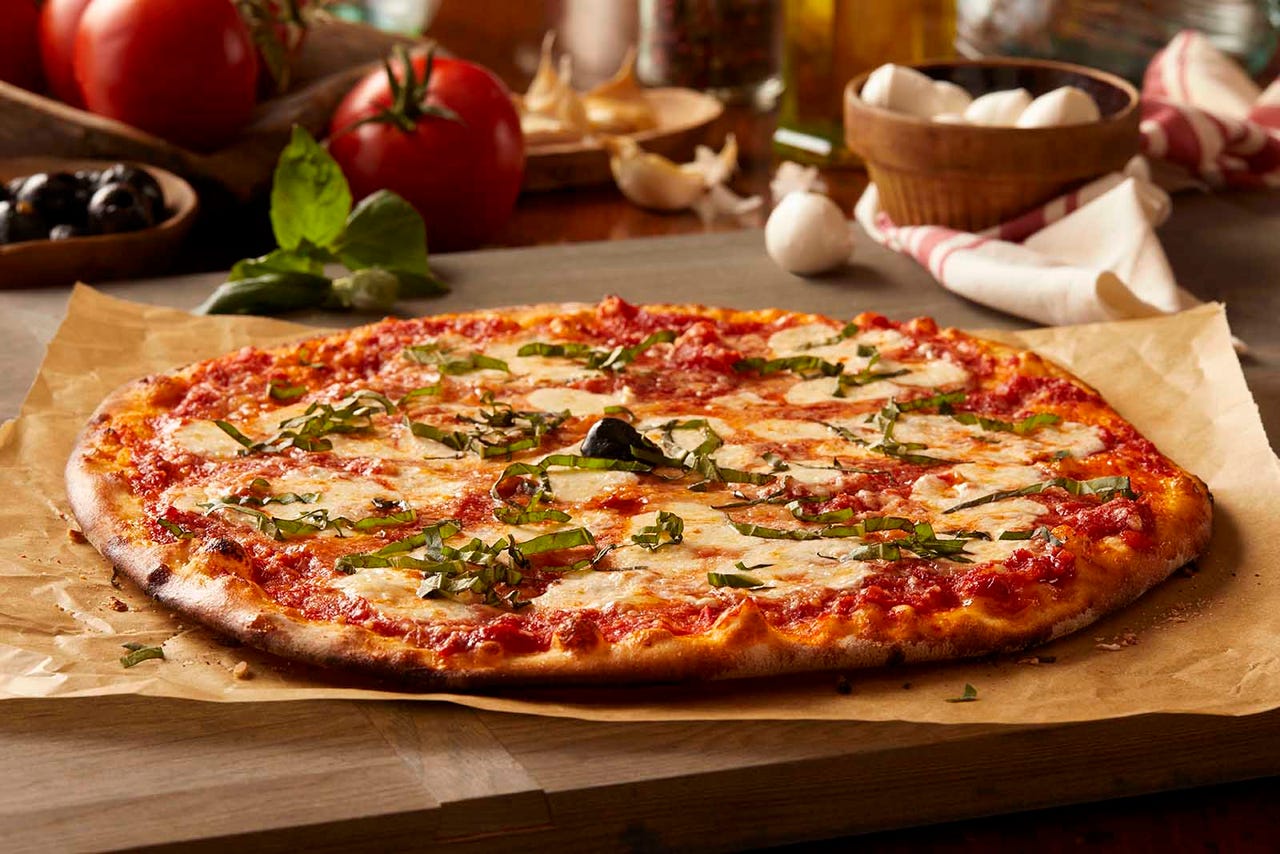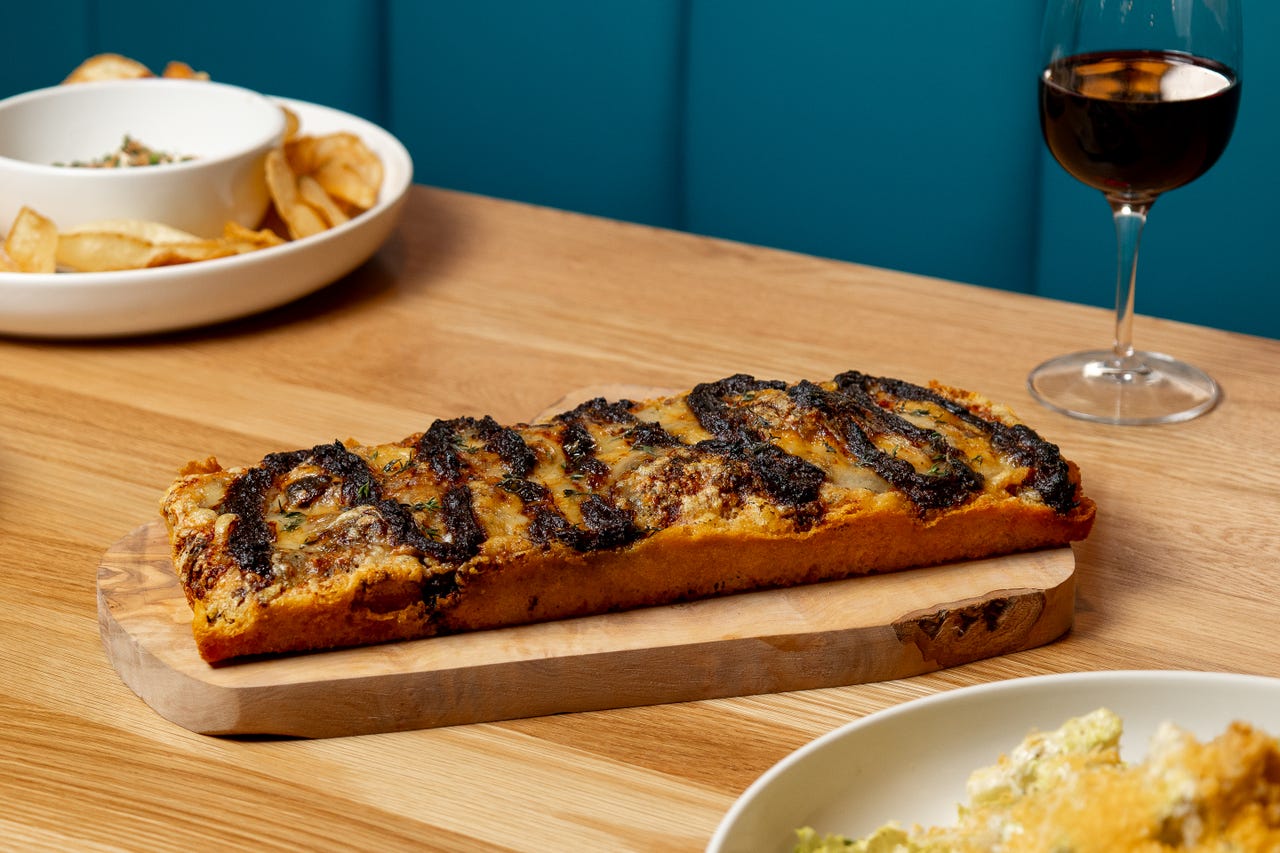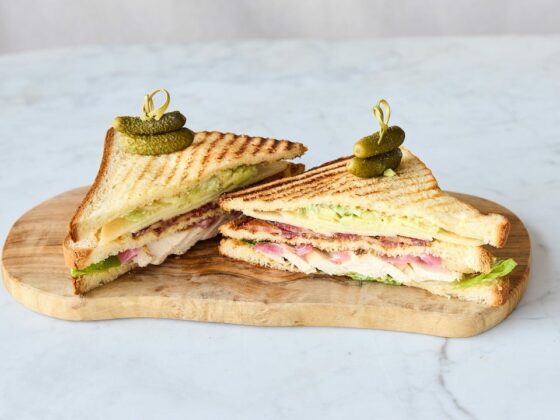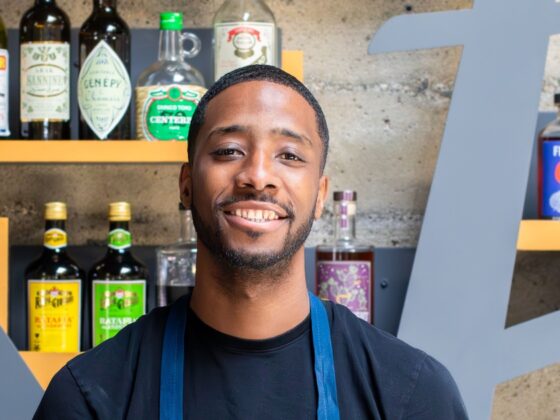Different regional pizza styles have been getting national attention in recent years, from thick Detroit-style pan pizza to crispy Chicago tavern-style, but many chefs are focusing less on the specific origins of their pizza style than they are the crust. Some are looking to make pies that are more easily digested and others just want their crusts to taste better — more complex and full-bodied — or have better texture, with crispiness and chew at the same time. To achieve those goals, they’re putting different yeasts to work and giving them a chance to develop with slower fermentation.
Casano’s Pizza Parlor, a restaurant in Rutherford, N.J., that just celebrated its first anniversary, uses two starters, or preferments — portions of the dough that start fermenting 24-48 hours in advance. One is an Italian-style preferment called a lievito madre — similar to sourdough, although owner Dave Ligas’ version is less sour. The other is made with his own wild fermented yeast that brings extra tang and complexity to the dough.
“We don’t use any commercial yeast,” he said.
After the preferments have had a day or two to develop, he adds water and a combination of Italian and American King Arthur flour, mixing it for 20-22 minutes, and then adds salt.
“It’s as natural as we can make it,” he said.
Once it’s mixed, it’s divided into balls — enough for one pizza. He lets the dough develop at room temperature for an hour or two and then refrigerates it. “We could use it that day,” Ligas said. “But we don’t. We refrigerate it for another 48 hours.”
The result is a lighter, more digestible crust.
“When you eat two slices of regular New York-style pizza, you’re sort of full,” Ligas said. “Some of our customers who say they are not big eaters can eat three, four slices, and they wonder why. It’s because the dough is so fermented that it’s very, very digestible.”
Modernist Pizza, a three-volume encyclopedia by Francisco Migoya and Nathan Myhrvold that was published in 2021 as part of the Modernist Cuisine book series, discusses slow fermentation at length, and details five reasons why you’d want to do it.
The first is that slow fermentation allows different acids, such as acetic and lactic, to develop, deepening the dough’s flavor. Second, the acids also help develop the dough’s gluten, or the elastic protein in bread that allows it to stretch as it rises, trapping gas and making for a lighter dough with nicer looking crumb. Third, the dough stretches more easily, potentially making the final stages of making pizza easier. Fourth, with the dough already fermented, the final proofing takes less time. And finally, it sounds good: Telling your customers about your artisanal dough-making process can add to your pizza’s appeal.

Bertucci’s has been fermenting its pizza crust since it opened its first location in Sommerville, Mass., in 1981. Photo by Bertucci’s
Mike Bausch, owner of Andolini’s Worldwide, a collection of 12 restaurants in Tulsa, Okla., including five pizzerias, makes three different pizza crusts. One ferments for 48 hours, one for five days, and one for a day.
“Different fermentation lengths get different results,” he said.
The one-day fermentation is for his Neapolitan-style pie, which is low in protein (9-10%), resulting in a lighter pie meant for straightforward and minimal toppings, like a classic Margherita with tomatoes, fresh mozzarella cheese, basil, and olive oil.
The 48-hour is the classic Andolini’s style dough, made from a local high-gluten flour (14% protein) from Shawnee Mills in Shawnee, Okla. “It’s the most akin to a New York crust, but not as crisp and with more chew,” he said.
The five-day ferment is for a Roman-style pie that uses a preferment called a poolish — a wet dough made with flour, water, and yeast. That’s mixed with flour and formed into a batard — sort of like a fat, oblong baguette — and allowed to ferment slowly under refrigeration.
Then it’s brought to room temperature and gently pulled to the corners of the 12-inch-by-18-inch pan in which it’s baked. “It’s a thick but light and airy crust,” Bausch said.
Bertucci’s, a 20-unit chain owned by Earl Enterprises, has been fermenting its dough under refrigeration since the first restaurant opened in the Boston suburb of Sommerville, Mass., in 1981.
“We ferment it in the walk-in for 24-36 hours,” said Charlie Coffey, a culinary leader at the chain and general manager of its Framingham, Mass., location.
“It brings up a general kind of fermented taste,” he said. “It builds the gluten and gives it that sweetness from the sugars that break down with the yeast and gives us the flavor you’re looking for. You really need that fermentation to get the flavor profile we’re looking for. Otherwise, it tastes like flour, oil, and water that’s kind of pushed together.”
It also has better texture, he said, adding that the same dough is used to make the chain’s rolls.

Hundredfold in Elmont, N.Y., features a pizza based on Stouffer’s frozen pizza, but it’s slowly fermented over three days. Photo by Hundredfold
“It’s crispy and gets that nice crunch on it, rather than just being kind of a flat cracker taste,” he said.
At Hundredfold, a Patina Restaurant Group restaurant that opened this summer at Belmont Park Village in Elmont, N.Y., chef Timothy Hollingsworth also uses a slow-fermentation process for the “French bread pizza” he makes.
Although of admittedly pedestrian inspiration — he wanted to evoke the Stouffer’s frozen French bread pizza he had growing up — Hollingsworth is an alum of Thomas Keller’s kitchens and he brought his experience to bear on the product.
“It was quite the process, honestly,” he said of the pizza.
It starts with a wet dough — around 75% hydration — that he gently folds in the walk-in over the course of three days.
“We don’t even call it kneading,” he said. “What I’m trying not to do is get those bubbles to escape.”
On the third day it’s portioned, formed into balls, then stretched gently into pans and proofed gently in a combi oven, which eliminates variables that can happen in a regular kitchen.
“You can really kind of lock it in from a recipe standpoint,” he said. Once it’s proofed, he spreads it with a little sauce — Mornay or marinara, depending on the pizza he’s making, and then par-bakes it.
“That topping bakes into the raw dough and then the rest of the topping stick better,” he said.
He bakes it starting with about 20% steam and gradually reducing it to 10% and then “basically zero,” so the crust gets crispy.
“We’re really trying to create a nice, airy, light dough,” he said.
Ultimately, the crust style operators choose depends on the pizza they want to make and the resources they have. But for those willing to invest the time, slow fermentation can deliver deeper flavor, better texture, and a more memorable eating experience.
Contact Bret Thorn at [email protected]









